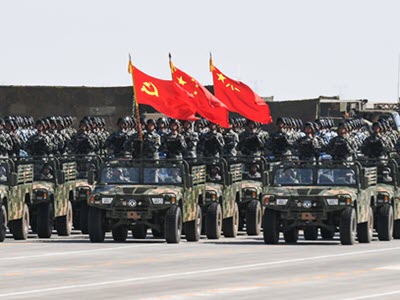The 2022 China Military Power Report: A View from Taiwan
In November 2022 the U.S. Department of Defense released its annual report Military and Security Developments Involving the People’s Republic of China. The report, commonly known as the China Military Power Report, assesses the current trajectory of the PRC’s military and security strategy. Since the report’s release, China has continued to modernize its military capabilities and publicly surveil foreign competitors, presenting a clear risk to the United States and its allies and partners.
The comments below are from Paul Huang, a Research Fellow at the Taiwanese Public Opinion Foundation.
For comments on China’s rising military power by experts from other countries across the Indo-Pacific, see Regional Voices on the 2022 China Military Power Report.
Paul Huang
Taiwanese Public Opinion Foundation
The findings of the U.S. Department of Defense’s 2022 China Military Power Report compel analysts to draw sobering conclusions regarding the state of affairs and trajectory of the military balance between China and other countries in the Indo-Pacific. The report accords special attention to the military balance between China and Taiwan—the primary target of this historically unprecedented military expansion.
The main takeaway of the “Taiwan’s Ability to Deter Force” section is that Beijing’s “multi-decade military modernization effort continues to widen the capability gap” between China’s and Taiwan’s militaries. The PLA’s capabilities to jointly project firepower across naval, air, rocket force, and ground domains further optimizes China’s advantage in any future conflict.
The report, however, falls short of calling out Taiwan’s lack of preparedness. It takes at face value the claim of Taiwan’s Ministry of National Defense that the Taiwanese reserves are 2.3 million strong. This number is wildly off the mark, considering that in 2021 only 110,000 reservists were called up for a week-long refresher that consisted of nothing more than basic weapons training. Taiwan’s reserve infantry brigades and even regular army units are still designed and operated based on decades-old understanding of the PLA that is out of touch with its current capabilities and doctrines.
The report also notes the Ministry of National Defense’s investment into supposedly “asymmetric warfare” such as “high-speed” vessels and sea mining tools, without elaborating on how such minor, local hardware acquisitions offset the military’s extreme vulnerabilities and flawed posture across the board. “Fast” missile corvettes, for example, cannot outrun even the PLA’s slowest subsonic anti-ship missiles. The addition of these vessels with nearly zero anti-air defenses only exacerbates the vulnerability of the Taiwanese navy’s heavily outdated, poorly defended major surface fleet, which even in 2023 has no ships equipped with modern necessities like a vertical launching system.
The 2022 China Military Power Report further assesses that the PLA’s capabilities offer China a host of military options to employ against Taiwan, ranging from a large-scale invasion of the island, maritime and air blockades, and precision missile strikes against key civil and military targets to more limited coercive measures. The report insists that the PLA’s amphibious lift capacity still falls shy of guaranteeing a “full-scale” invasion of Taiwan. Nonetheless, it acknowledges China’s deployment of new amphibious warfare ships like the Type 075, Type 071, and fast-moving civilian roll-on/roll-off vessels to overcome gaps in amphibious lift capabilities.
Finally, the 2022 report revives the term anti-access/area-denial (A2/AD) to describe the PLA’s long-range strike power aimed to deter and defeat potential U.S. intervention in a conflict. Most importantly, the report validates these capabilities by citing China’s robust space-based ISR (intelligence, surveillance, and reconnaissance) assets that have reached parity with—if not superiority to—U.S. assets. The fact that China’s in-orbit satellite fleet has doubled from 2018 to 2021 is evidence that the “missing link” needed to support the PLA’s A2/AD kill chain is now all but complete and has removed the last lingering doubt that an anti-ship ballistic missile like the DF-21 or DF-26 could indeed pose a lethal threat to U.S. aircraft carriers in the theater.
Decision-makers in Taipei should reflect on this reality and what it entails for the U.S. “defense guarantee” that they insist is still a given. If the goal of such domestic messaging is to downplay threats to prevent a general collapse in morale, it will no longer work. On the other hand, the report might give the Taiwanese people a renewed sense of urgency and a need for self-preservation. This could be the only way for Taiwan to build public support for making the difficult but necessary policy decisions to reform and strengthen its badly outmatched military.


